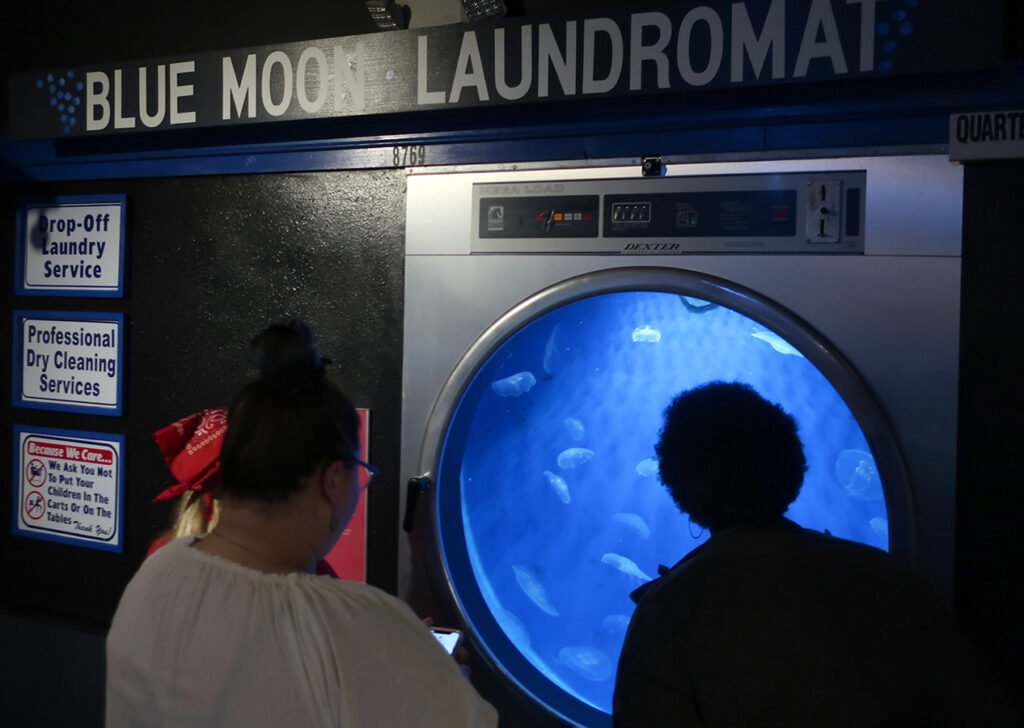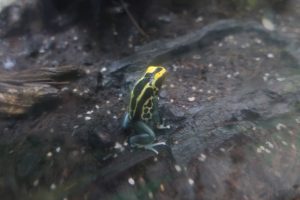Watch Mallory Feed the Silver Screen Exhibit @CLEAquarium
See Mallory feed the “Silver Screen” jacks as the Greater Cleveland Aquarium aquarist shares information on schooling fish.
Hi! I’m Mallory. I’m one of the essential staff here at the Greater Cleveland Aquarium taking care of our animals and today I’m going to be showing you how we feed our Silver Screen exhibit.
So we have three different species of jacks in here. The lookdowns are the ones that you’re seeing the most of. They are kind of the flat-faced ones. We have our golden trevallies which are the yellow ones with the black stripes on them. And they’ll lose that yellow color as they get bigger and they can actually grow to be up to 4 feet, so they’re going to get quite a bit bigger. And then our third species of jack is our palometas which are the ones with the black fins. There’s only a couple of them in there and they’re pretty close to full-grown, so they’re going to stay about that size.
And all of those species of jacks can be found in the Atlantic Ocean. And then we do have our brownbanded bamboo shark that’s in here. They’re also sometimes called catsharks and that’s because they can have a whisker-like appendage in the front of their face so it helps them kind of feel things out.
Today we’re going to be feeding about three pounds of capelin. They get a variety of different fish. Today is capelin. Sometimes they’ll get herring and squid and all sorts of other saltwater fish.
This exhibit, our Silver Screen exhibit is kind of meant to show how schooling fish work. So schooling fish are going to be in big, large groups and that’s because there’s safety in numbers. If a predator were to come by it’s going to be a lot harder for that predator to pick off the fish versus just chasing down a fish that might be on its own.
One of the ways that schooling fish can do this is because they have something called a lateral line. That lateral line is directly connected to their nervous system and it’s a line that goes down the side of their body and it’s going to be very sensitive to any movement or pressure changes in the water. So as soon as the food hits the water or if there’s a predator nearby, the very first fish that’s going to sense that is going to move and then all of them are going to sense at the exact same time.
Where to find @CLEAquarium: Coastal Boardwalk Gallery
Author: Mallory H.



